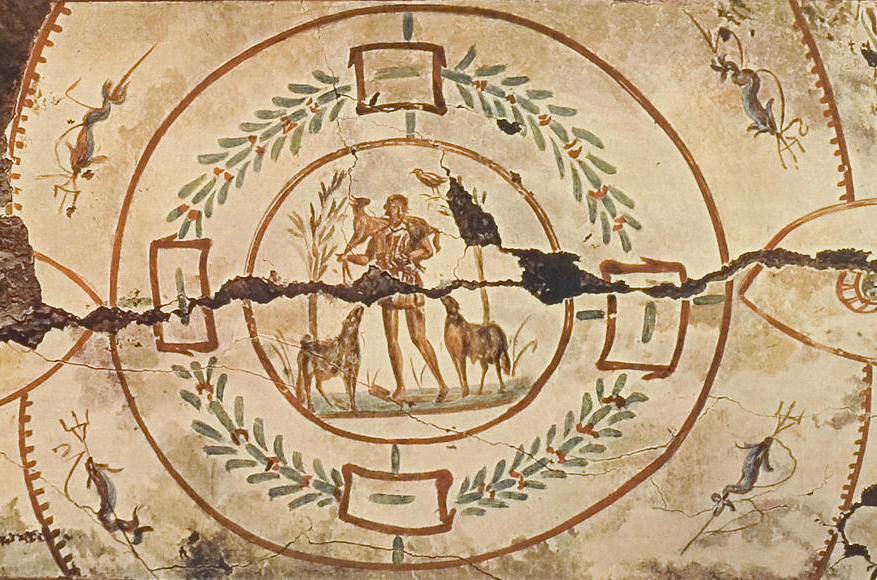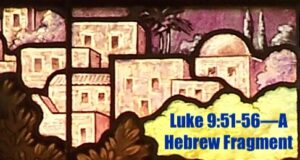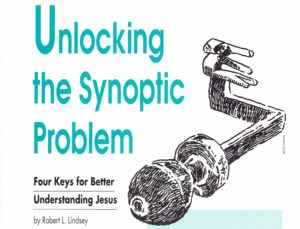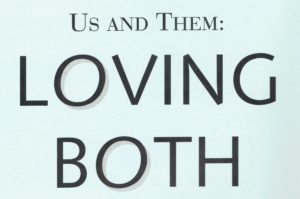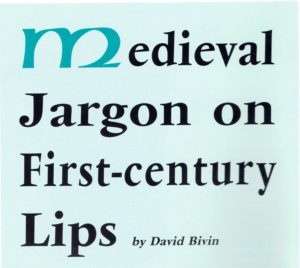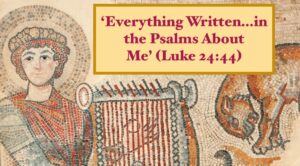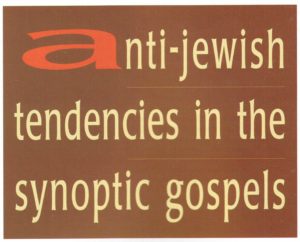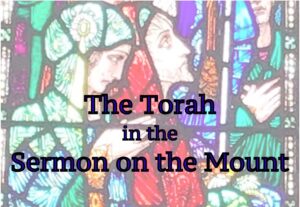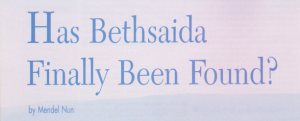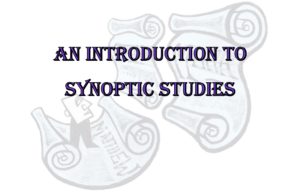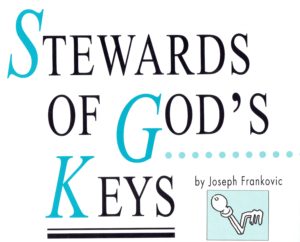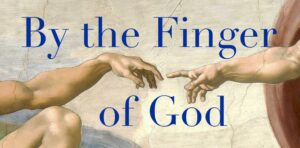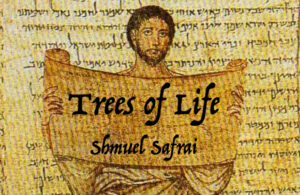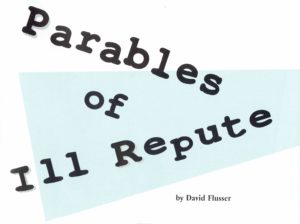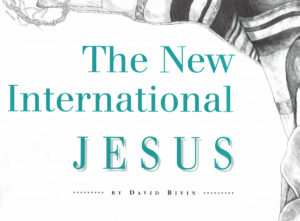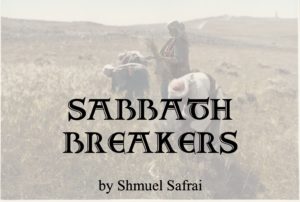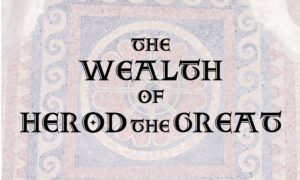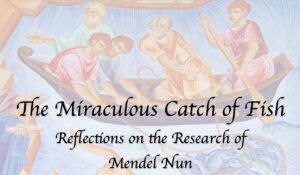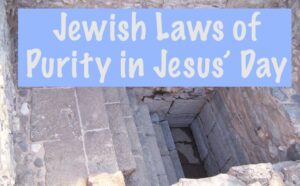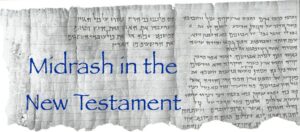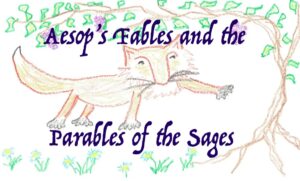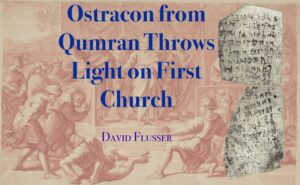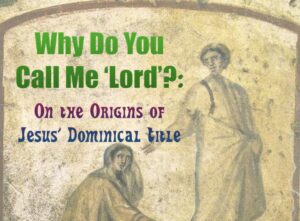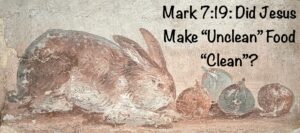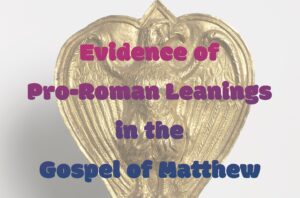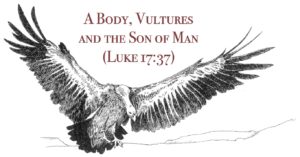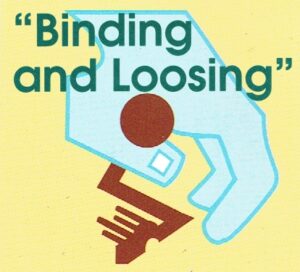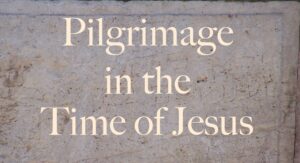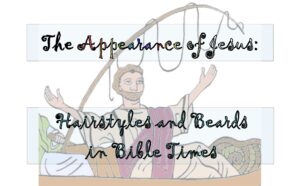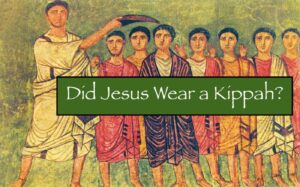Matt. 18:10-14; Luke 15:3-10
(Huck 133, 172; Aland 169, 219, 220; Crook 188, 265, 266)[1]
Updated: 13 September 2022
וַיִּמְשׁוֹל לָהֶם אֶת הַמָּשָׁל הַזֶּה לֵאמֹר מִי אָדָם בָּכֶם שֶׁיֵּשׁ לוֹ מֵאָה צֹאן וְנִדַּחַת אַחַת מֵהֶן הֲלֹא יַנִּיחַ אֶת הַתִּשְׁעִים וְתִשְׁעָה עַל הֶהָרִים וְיֵלֵךְ וִיבַקֵּשׁ אֶת הָאֹבֶדֶת עַד שֶׁיִּמְצָא אֹתָה וּכְשֶׁהוּא מוֹצֵא אֹתָה שָׂם עַל כְּתֵפוֹ בְּשִׂמְחָה וּבָא לְבֵיתוֹ וְקֹרֵא לְאוֹהֲבָיו וְלִקְרוֹבָיו לוֹמַר לָהֶם שִׂמְחוּ עִמִּי שֶׁמָּצָאתִי אֶת הַשֶּׂה שֶׁלִּי הָאֹבֶדֶת אָמֵן אֲנִי אֹמֵר לָכֶם כָּךְ יֵשׁ שִׂמְחָה בַּשָּׁמַיִם עַל רָשָׁע אֶחָד שֶׁעֹשֶׂה תְּשׁוּבָה מֵעַל תִּשְׁעִים וְתִשְׁעָה צַדִּיקִים שֶׁאֵין לָהֶם צוֹרֶךְ בִּתְשׁוּבָה
וּמִי אִישָׁה שֶׁיֵּשׁ לָה עֲשָׂרָה דִּינָרִים וְהִיא מְאַבֶּדֶת דִּינָר אֶחָד הֲלֹא תַּדְלִיק נֵר וּתְכַבֵּד אֶת הַבַּיִת וּתְבַקֵּשׁ עַד שֶׁתִּמְצָא אֹתוֹ וּכְשֶׁהִיא מֹצֵאת אֹתוֹ קֹרֵאת לְאוֹהֲבוֹתֶיהָ וְלִקְרוֹבוֹתֶיהָ לוֹמַר לָהֶן שְׂמַחְנָה עִמִּי שֶׁמָּצָאתִי אֶת הַדִּינָר שֶׁאִבַּדְתִּי אָמֵן אֲנִי אֹמֵר לָכֶם כָּךְ יֵשׁ שִׂמְחָה לִפְנֵי מַלְאֲכֵי שָׁמַיִם עַל רָשָׁע אֶחָד שֶׁעֹשֶׂה תְּשׁוּבָה
Then Yeshua told them this parable: “Imagine you have a hundred sheep and one of them strays from the flock. Won’t you leave the ninety-nine on the hills and go search for the one that got lost until you’ve found it? And when you’ve finally found it, won’t you carry it home on your shoulders and invite all your nearest and dearest and tell them: ‘Come celebrate with me! I’ve found my missing sheep!’?
“Yes! And I’ll tell you what: God rejoices over one sinner who repents even more than he does over ninety-nine righteous people who don’t need to repent.
“Or can you imagine a woman who has ten coins each worth a day’s wage, but she’s lost one of them? Won’t she light a lamp, sweep the house, and search until she’s found it? And when she’s finally found it, won’t she invite all her nearest and dearest and tell them: ‘Come celebrate with me! I’ve found the coin I lost!’?
“Yes! And I’ll tell you what: God has this kind of joyful celebration in the presence of the angels over every single sinner who repents.”[2]
| Table of Contents |
|
3. Conjectured Stages of Transmission 5. Comment 5b. Lost Coin simile 8. Conclusion |
 a
a
.
.
.
.
.
Reconstruction
To view the reconstructed text of the Lost Sheep and Lost Coin similes click on the link below:
Paid Content
Premium Members and Friends of JP must be logged in to access this content: Login
If you do not have a paid subscription, please consider registering as a Premium Member starting at $10/month (paid monthly) or only $5/month (paid annually): Register
One Time Purchase Rather Than Membership
Rather than purchasing a membership subscription, you may purchase access to this single page for $1.99 USD. To purchase access we strongly encourage users to first register for a free account with JP (Register), which will make the process of accessing your purchase much simpler. Once you have registered you may login and purchase access to this page at this link:
Conclusion
The Lost Sheep and Lost Coin similes offer down-to-earth illustrations of God’s response to repentance: God feels about repentant sinners the way a man feels who has just found a sheep that strayed from the flock, or the way a woman feels who has just found a coin that had gone missing. Jesus’ purpose in telling these similes was to explain why he didn’t mind eating and drinking in the home of Levi with toll collectors and other sinners. Like the owner of the lost sheep and the woman who found her missing coin, God wants those who are closest to him to come and rejoice with him that a sinner has repented. It would be nothing short of rude to refuse God’s invitation. Jesus had joined in the celebration over the recovery of lost sinners. By telling the twin similes he invited his critics to do the same.[3]
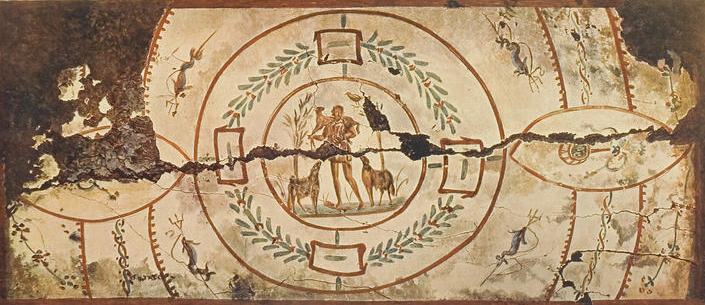
Catacomb depiction of a shepherd carrying a sheep on his shoulders. Image courtesy of Wikimedia Commons.
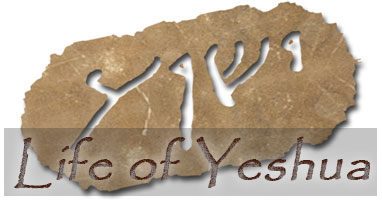 Click here to return to The Life of Yeshua: A Suggested Reconstruction main page.
_______________________________________________________
Click here to return to The Life of Yeshua: A Suggested Reconstruction main page.
_______________________________________________________
- [1] For abbreviations and bibliographical references, see “Introduction to ‘The Life of Yeshua: A Suggested Reconstruction.’” ↩
- [2] This translation is a dynamic rendition of our reconstruction of the conjectured Hebrew source that stands behind the Greek of the Synoptic Gospels. It is not a translation of the Greek text of a canonical source. ↩
- [3] See Otto Michel, “τελώνης,” TDNT, 8:88-105, esp. 105 n. 157. ↩

